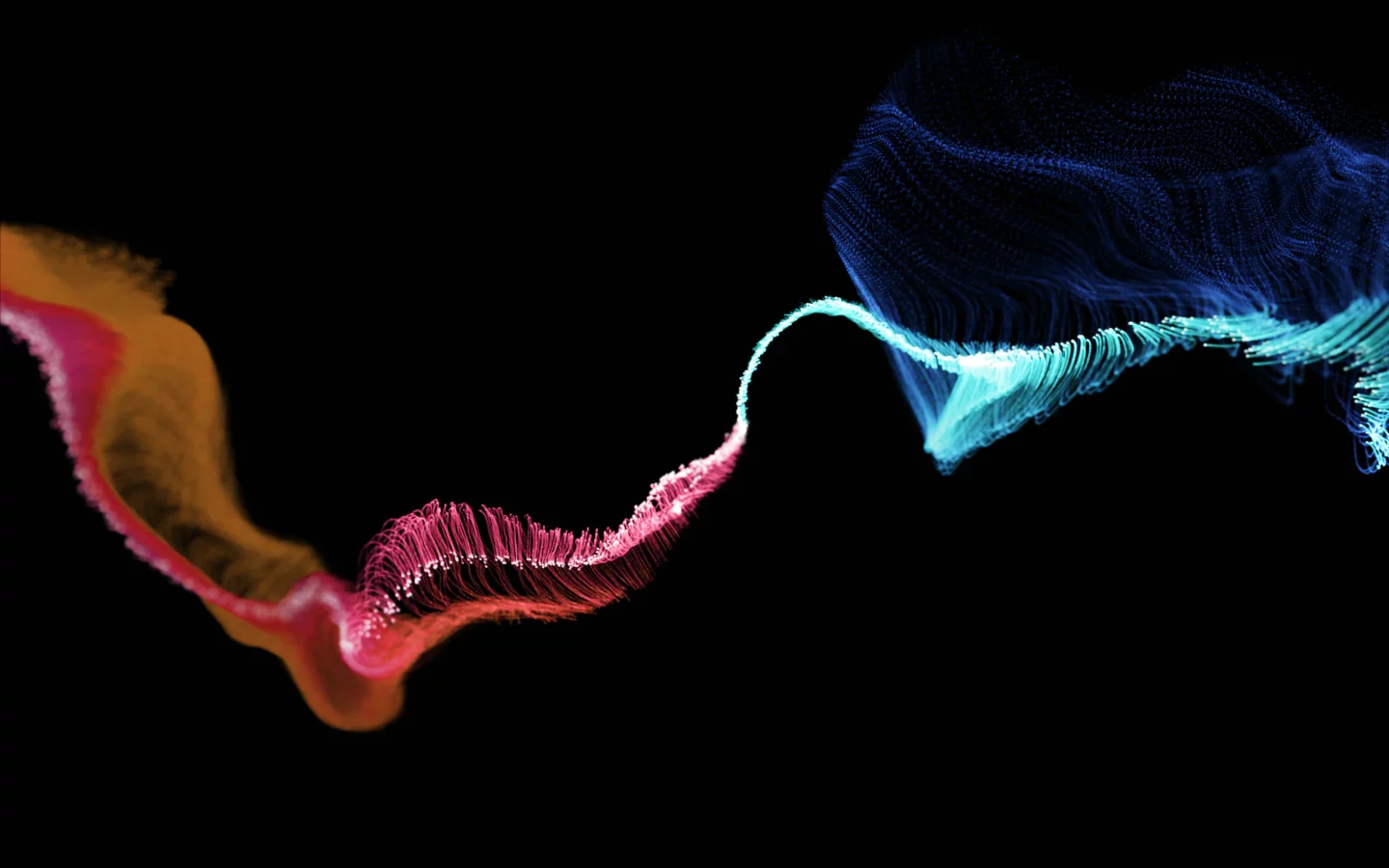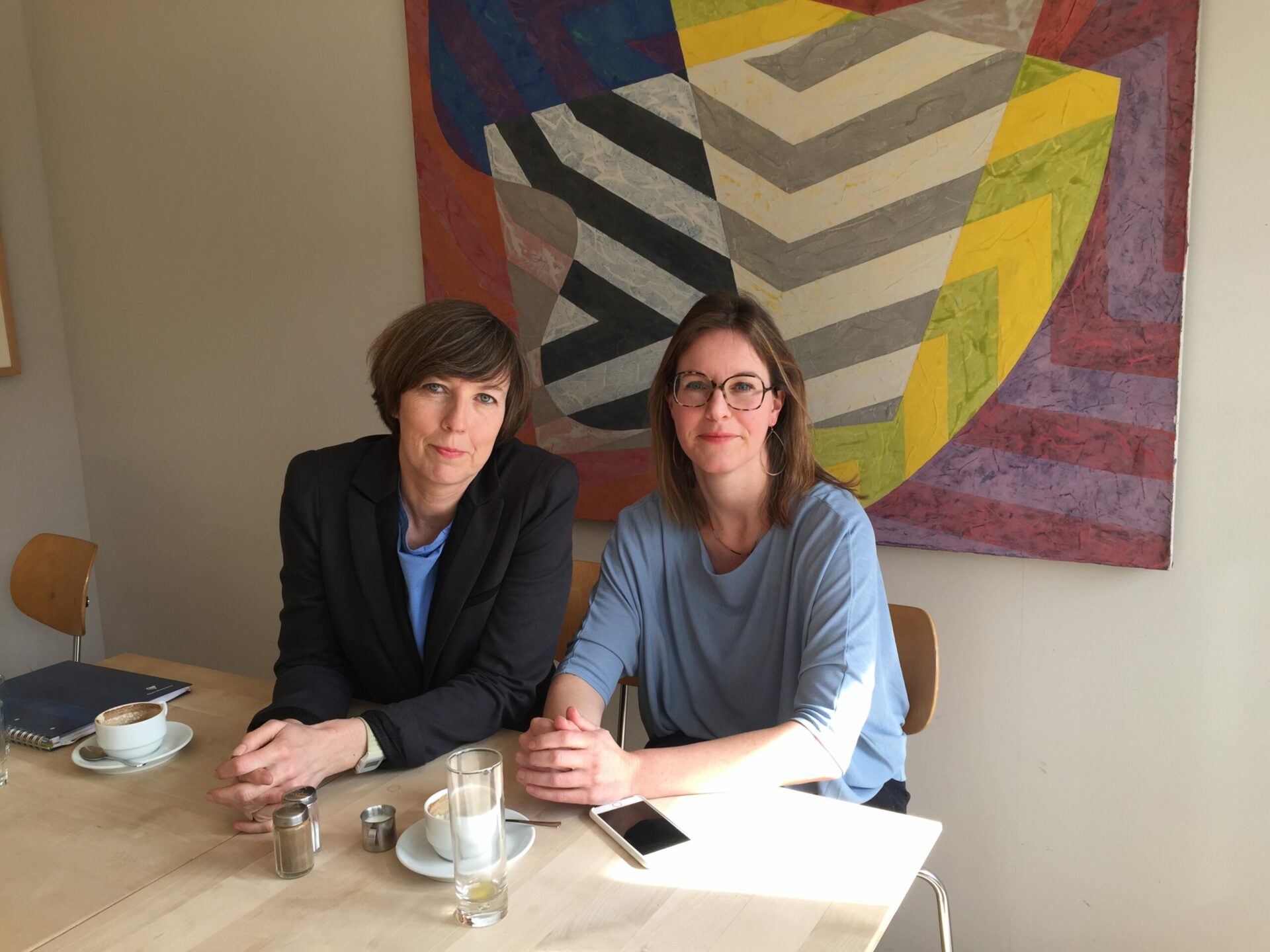Audioarchiv Kunst is Documenting Rhineland’s Art History


Words: Annalena Roters and Chris Erik Thomas.
Sabine Oelze and Marion Ritter never meant to start Audioarchiv Kunst. It was the eve of the 25th anniversary of the Museum Island Hombroich, the sprawling cultural center in Neuss, Germany situated on over 60 acres of meadowland, and the duo had sat down to interview the artist Gotthard Graubner. At the time, the painter was living and working from a residence on-site. “Graubner got to chatting and knew many anecdotes from the beginnings of his artistic career,” recalls Oelze. “He noted names that today only insiders know.”
He told stories about Gallery 22, the contemporary art space founded by Jean-Pierre Wilhelm and Manfred de la Motte in Düsseldorf in 1957, which was where Fluxus and Informel were exhibited, and also discussed the major differences between the scene then and now. “It was fascinating to listen to him, to be able to ask questions, and through his vivid recollection, to better understand the spirit of the scene at that time,” explains Ritter. “We felt that this way of directly experiencing art history had been lacking until now.”
For both Oelze and Ritter, it was this interview with Graubner that provided the spark and it was his unfortunate passing a short time later that year that fanned the flame that would lead to the founding of Audioarchiv Kunst. As Oelze explains: “After the interview, we thought, ‘These are voices that should be captured!’ [When] Graubner died a little later, we realized that these stories had disappeared with the last contemporary witnesses.”
Now, since 2017, the pair have carefully cultivated an oral history of Rhineland’s contemporary art scene. Through their work, a broad swath of stories from these early days has been unearthed, including voices that had been overlooked or overheard until now. As we celebrate their contribution to the region’s rich art history, we sat down to talk to Oelze and Ritter to discuss the reliability of memory, the uniqueness of the art scene, and what comes next for Audioarchiv Kunst.
Please note that all audio interviews are in German.

Copyright: Private. Courtesy of Audioarchiv Kunst.
The journalist Jürgen Tempel has collected voices on the punk scene in Düsseldorf, among other places, in his book, Verschwende deine Jugend. He speaks of “a hundred different truths” that he has collected. Are you also often told the same stories from entirely different perspectives? What does that say about the reliability of the sources? And what does that mean for the oral history method?
SO: The beginnings of the contemporary art market in the Rhineland are well documented, as in the great book Die 60er Jahre. In the many conversations we had, however, a much broader picture of those early years emerged for us. In addition to the art market, there were also many movements that worked against commercialism. Fritz Heubach, who published the magazine Interfunktionen starting in 1967, comes to mind. Or Gabor Altorjay, Chris Reinecke, and Erinna König, whose art was extremely activist and politically motivated.
Sometimes the facts become blurred in retrospect. When people today remember something that happened back then, it happens that something is misrepresented. That is a basic problem of the method we use, but it must also be said that if you had held the microphone under people’s noses back then, it would have also been highly subjective. On the other hand, many of our interviewees only get their memories back when they talk to us. If we weren’t there, they might not even exist. We also try to establish connections between the eyewitnesses. When Rudolf Zwirner recounts his journey, Benjamin Buchloh and Kasper König, who both apprenticed with him, also have their say. We try to approach them from as many sides as possible so that the interviews complement each other.
MR: The remarkable thing about oral history is that it allows people to have their say who were previously overlooked or overheard because they were, for example, marginal figures or because, depending on the time, some perspectives are simply more present than others. It is important that this narrative also finds its way into research.
How do you proceed when you plan an interview and in the interview situation itself?
SO: We try to prepare as best we can, going to libraries such as the Cologne Museum Library in the Museum Ludwig, researching in digital archives, or listening again to conversations that have already taken place to confront the contemporary witnesses with what others have said about certain events. In the interview itself, we take a lot of time and listen carefully. Since we prepare ourselves well, we can sometimes fill in gaps in the data or with people’s names, which then helps [the subjects] to remember.
The remarkable thing about oral history is that it allows people to have their say who were previously overlooked or overheard.
How many contemporary witnesses have you interviewed in the meantime?
MR: We have conducted almost 60 interviews so far, including interviews with artists, gallery owners, collectors, critics, publishers, filmmakers, musicians, and companions — some of whom experienced the events of the time from the margins of the art context. We select our protagonists specifically to present as broad a picture of the scene as possible. Thus, well-known names such as Konrad Klapheck, Daniel Spoerri, and Ulrike Rosenbach are among them, but also lesser-known ones such as Gábor Altorjay, Henning Brandis, or Erinna König. Klaus Honnef speaks from the perspective of a critic and exhibition organizer; Rudolf Zwirner recalls the beginnings of Documenta and the art fair. Renate Gruber collected artistic photography with her husband throughout her life and tells us about their shared passion; Benjamin Buchloh stood in the 1960s with one foot in Cologne and the other in the USA and can tell us about these two perspectives.
SO: After concentrating on the 50s to the 70s in the first phase, we are now also increasingly talking to representatives of the 80s.
Do you know if the archive is used for scientific research or other projects?
SO: We have already received several letters from students who are using our archive for their research. We were also asked whether we would like to create a similar archive for sound art, but we declined because we are still busy with our interviews for the Audioarchiv Kunst.
MR: Many art historians and disciplines like art market research appreciate our work. But we also know that our offer appeals to many people who are simply interested in art or the history of the Rhineland. The audio files are freely available on the web, and many people enjoy listening to these memories.
What makes the Rhineland special are the high standards that have been set here from the very beginning.
Women describe in great detail how much they had to fight because they were not taken seriously by the official squad.
Which protagonists and which artistic works have particularly impressed you and why?
SO: That’s where the women come in, who have always had a tougher stand. For example, Rissa — the artist and wife of K.O. Goetz — or Ulrike Rosenbach and Birgit Hein still had to struggle with many stereotypes. Hein was accused of having to earn the money to support her future husband, Wilhelm Hein, an experimental filmmaker. She became an artist anyway, against the resistance of her parents. It was also impressive to meet Chris Reinecke in her apartment in Düsseldorf, how she got politically involved at that time and organized demonstrations against rent-seeking and for gender justice! The whole thing culminated in a spectacular happening at the press conference of [4. documenta] in Kassel, where she kissed the then-director Arnold Bode.
Women describe in great detail how much they had to fight because they were not taken seriously by the official squad.
MR: I can say that all the interviewees impressed me with their stories at one point or another. It is also exciting to hear the memories of contemporary witnesses who have so far only very rarely spoken about it publicly. For example, Ursula Reppin – the wife of Rudolf Zwirner — talked about her experiences from the time when she ran the Zwirner Gallery with her husband. Walter König also talked for the first time in great detail about the beginnings of his career.
Back then, there was a Cologne-New York axis; today, the whole world wants access.
Your interview partners often talk about the conditions under which they worked. How has the situation changed for artists in the region? And do the predecessors play a role for today’s young artists?
MR: A career was certainly not the main focus back then. It was more about advancing art, breaking down rigid boundaries, challenging the public, rethinking the exhibition format, and even the sale of art. I think that a lot was achieved during this time, from which the art business also benefits today.
SO: The biggest difference is the number of artists, galleries, and curators, which has significantly increased over the years. In the beginning, there was a sworn community; people met in the relevant pubs and fought for the same cause. Everything was done through personal contacts. Now everyone fights for [themselves]; sales have grown to gigantic proportions and are in the foreground. In 1967, [when] 18 galleries participated in the first art market in the Gürzenich, a total of one million German marks was turned over, which was a sensation at the time. Today, more than 200 galleries take part in Art Cologne, and the price of a single work of art can exceed one million euros. Back then, there was a Cologne-New York axis; today, the whole world wants access.
Chris Erik Thomas is the Digital Editor of Art Düsseldorf. They work as a freelance writer and editor in Berlin and focus primarily on culture, art, and media. Their work can also be seen in Highsnobiety, The Face Magazine, and other publications.